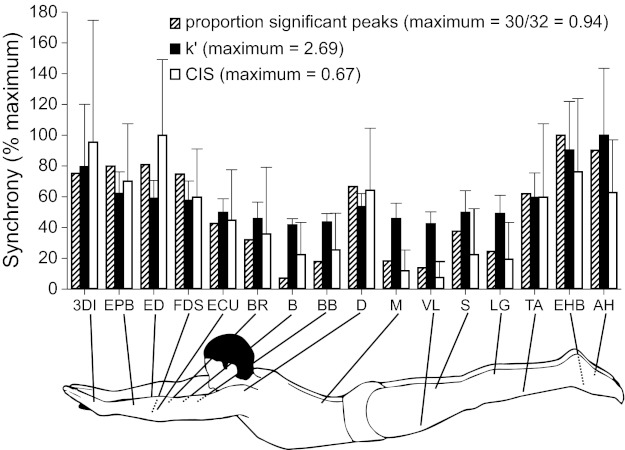Fig. 3.

Mean synchrony indexes for motor unit pairs in 16 different muscles. For each synchrony index [proportion of significant peaks, k′, or common input strength (CIS)], mean values were expressed relative to the muscle exhibiting the largest value. The muscles with the largest synchrony values for each index were as follows: EHB (intrinsic foot muscle), AH (intrinsic foot muscle), and ED (extrinsic hand muscle) for the proportion of significant peaks, k′, and CIS, respectively. For k′ and CIS, error bars represent 1 SD. Overall, there was a tendency for distal muscles to exhibit greater synchrony than more proximal muscles. Furthermore, intrinsic foot muscles, whose motor nuclei presumably have less direct cortical input than other muscles examined, tended to exhibit the greatest amount of synchrony. Abbreviations for the muscles are defined in Fig. 2.
